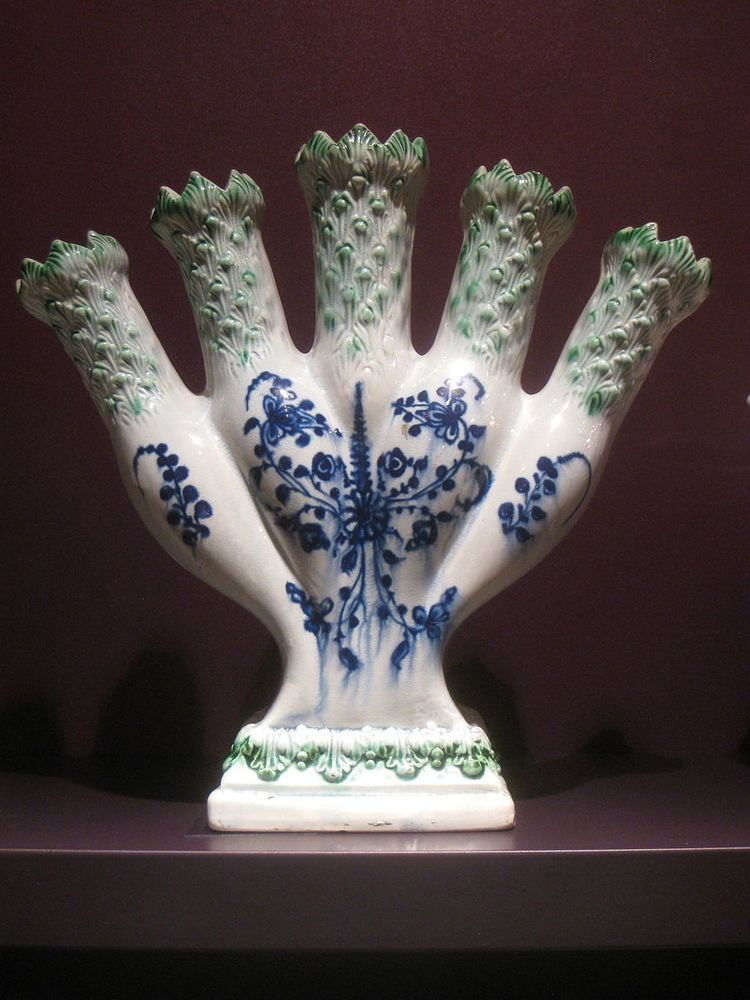 | ||
Leeds Pottery, also known as Hartley Greens & Co., is a pottery manufacturer founded around 1756 in Hunslet, just south of Leeds, England. It is best known for its creamware, which is often called Leedsware.
Leeds Pottery has had a long and complex corporate history. It was created in Hunslet by John Green and Joshua Green, unrelated, around 1756, joined by Richard Humble in 1775 to become Humble, Green, and Co. Circa 1783 a businessman named William Hartley joined the firm, and the firm renamed Hartley Greens & Co. By 1790 the company employed 150 people. The company's flint mill at Thorpe Arch was in 1814 replaced by a converted windmill on their Leeds premises. Its pottery catalog at this time was extensive, with over 200 general items and 48 patterns of tea, coffee, and chocolate services in a wide variety of plain, ornamented, perforated, and basketwork styles; this same catalog continued with minor variations until a much later period. At this time, annual sales were about £30,000 per year.
In the early 19th century, however, the company went into a prolonged decline and was sold repeatedly, becoming in turn Wainwright & Co., Stephen & James Chappell, Warburton & Britton, and finally Richard Britton & Sons, until it finally closed in 1881. Its buildings were then demolished. However, in 1888 production was restarted by James Wraith Senior, who used the old designs and marked his products Leeds Pottery. This business wound down in 1957. Leeds City Council restarted the brand in 1983, making reproduction pieces, but soon had to sell the business. Production was moved to Stoke-on-Trent, and in 1992 after acquisition by John Croft it was renamed Hartley Greens & Co. In 2011 it was acquired by Denby Pottery, and production moved to Middleport pottery, north of Stoke-on-Trent.
